
Please say that you have read my previous post, The Dining Table: It’s Not Just a Piece of Wood with Four Legs, in which I speak about the significance of the dining table as a symbol of unity, bringing people together to engage in meaningful conversation? If not, please click the link above and then come back to this article – it will only heighten your experience with this post. If you have read it, then you might agree with me and find that the table is more than just a place to sit – it’s a scrapbook of memories. It is for this reason that I urge you to protect your table during dining experiences. What better way to protect your dining room treasure – while adding a bit of flare and a touch elegance to the space – than using a perfectly pressed tablecloth?
How did we come to lay our tables with cloths? Makes perfect sense as a way to protect your table, right? Of course it does! However, originally tablecloths served an entirely different purpose. What we call a “tablecloth” today was historically called an “accidental cloth.” With the absence of a napkin – a concept that had yet to be conceived – the Romans used an accidental cloth to clean their chins. The idea of entertaining my guests with no napkins, followed by asking them to wipe their mouths with my tablecloth, is enough to make me faint!
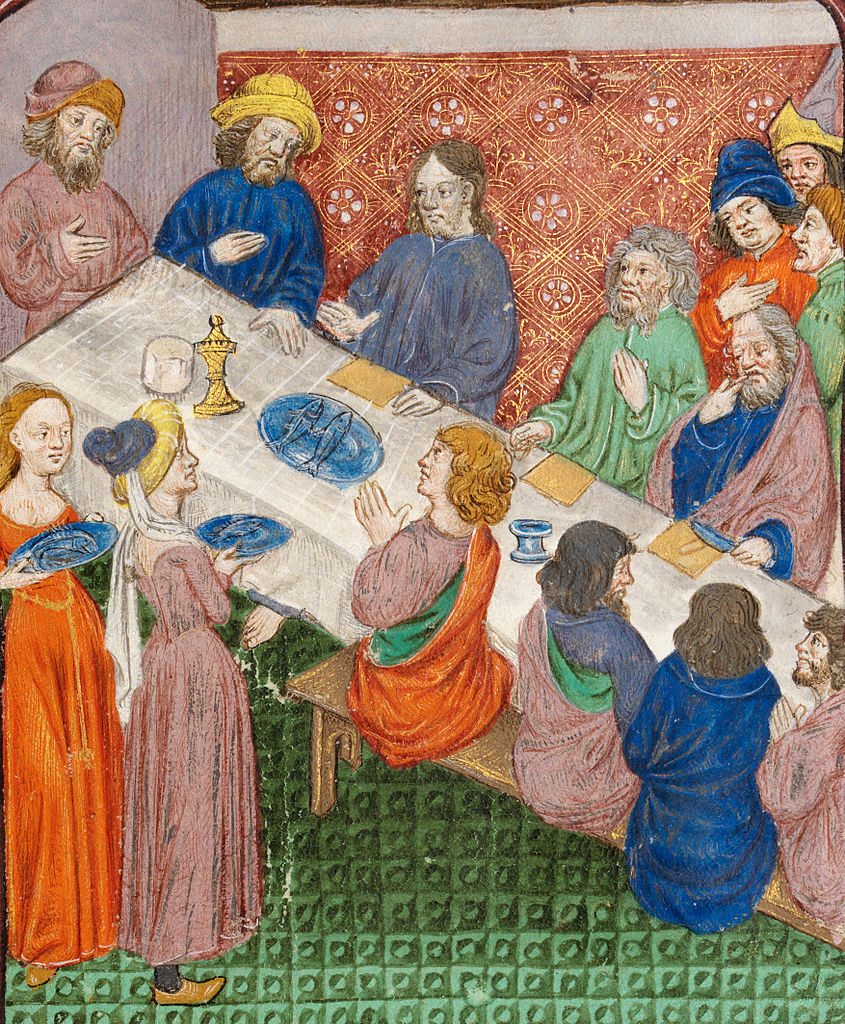
These “accidental cloths” would even sometimes be layered, like an onion, pulling back each layer, between the various food courses, so that a new fresh clean cloth was presented for each subsequent course. On many occasions, as the meal progressed, all layers would have been removed by the dessert course leaving guests to dine on a bare table. (You might be fascinated to know that the word “dessert” is derived from the French word desservir, meaning “to clear or empty the table.” In a traditional meal setting, to serve the dessert course, the only remnants left on the table are the water glass, and/or a dessert wine glass, the dessert utensils, dessert plate and perhaps the centerpieces – all other items are removed.)
Today people dress their tables with all sorts of vibrant colors and unique patterns – I do agree they add an element of pizazz to convey various themes and help celebrate special occasions. The Traberts have a very festive and lovely table cloth we inherited from Tedd’s mother to set our Very Merry Christmas themed tables. However, I still maintain that there is nothing like a crisp pure white tablecloth to add elegance and style to your table; it makes everything set upon it pop and become center stage for any dinner setting.
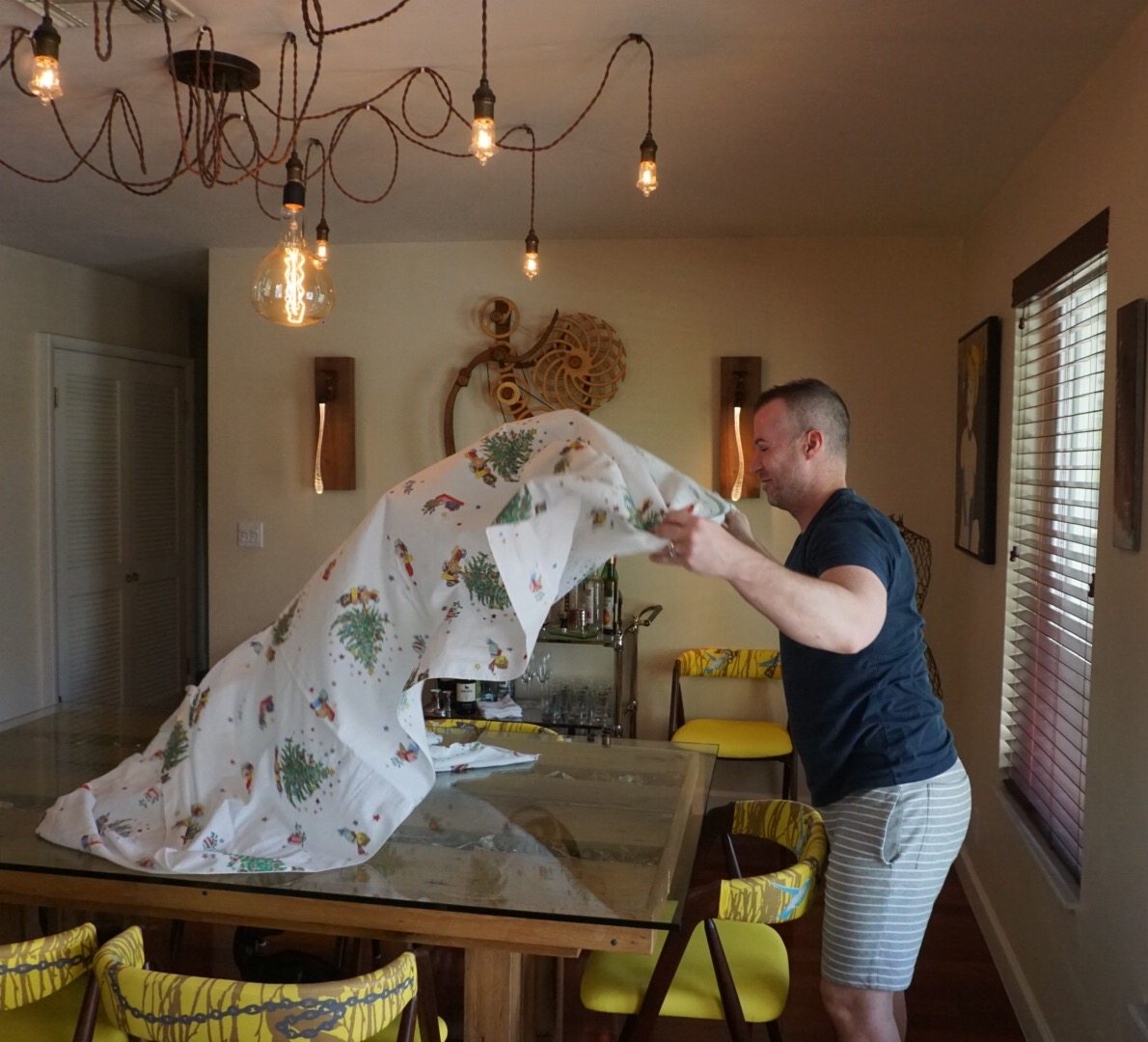
In a traditional English formal dinner, proper style would dictate that a table be set with a white damask pattern and hang approximately 12-15” from the edge. A “da” what? Damask . . . is a reversible figured fabric in wool, linen, cotton, silk or synthetic fibers with a pattern formed by weaving. If you are not verse in fabrics, do not worry, I had to initially look it up as well – especially considering in Kansas we just used picnic tablecloths to dress up a table.
Must you use white? For a formal dining experience – YES! Once upon a time in a far off land, when washing machines did not exist yet, people had to wash their linens by hand – can you image the absolute horror? A white tablecloth became a symbol of great wealth, purity and cleanliness in the home; much like to have salt generously on the table. (An explanation to that salty tid-bit coming soon.) With no machines to do the dirty work, one would need great wealth and a large staff to own and maintain brilliantly white tablecloths. Thank goodness someone invented such a machine to handle the pesky red-wine and marinara stains from the Trabert Italian feasts, or I might have gone off the deep-end by now.
As you can see, the table cloth plays an intricate role in a dinner party as it sets the stage and a foundation from the first course to the dessert. So, whether you go wild with color or keep it elegant with white, it is a Trabert recommendation to invest in some nicely woven tablecloths to wow your guests and keep your table like-new.
I leave you with this little trivia piece for you to ponder. When cleaning any all-white item what would you add to the wash to brighten the white?


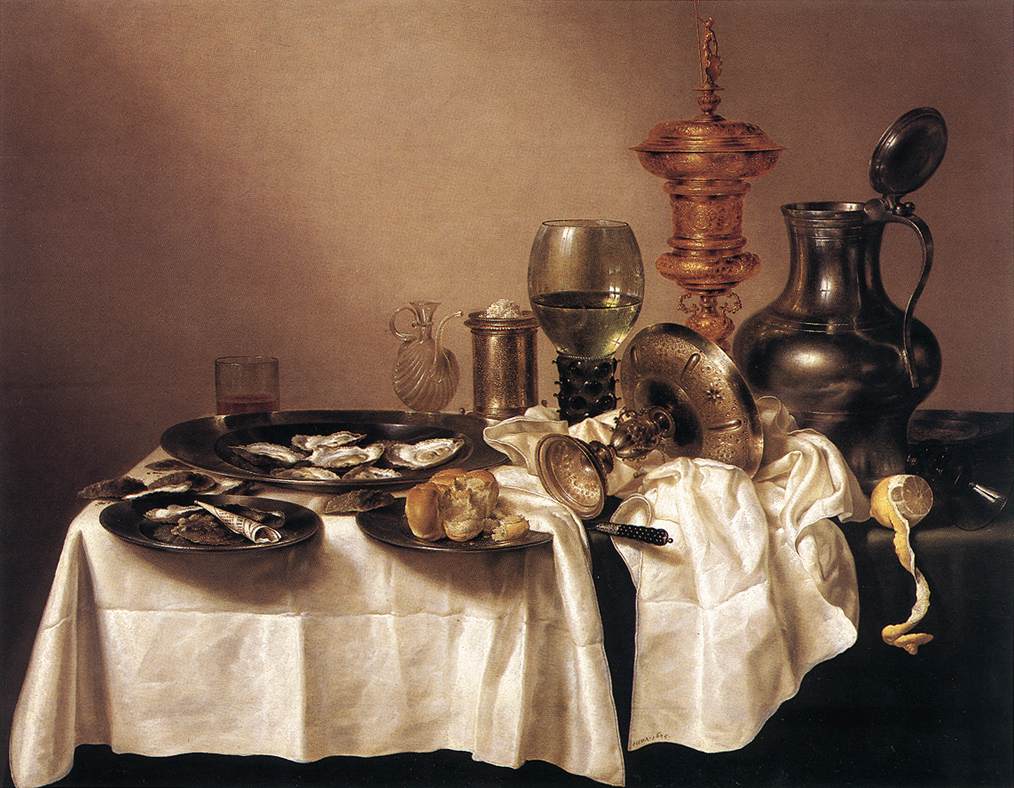
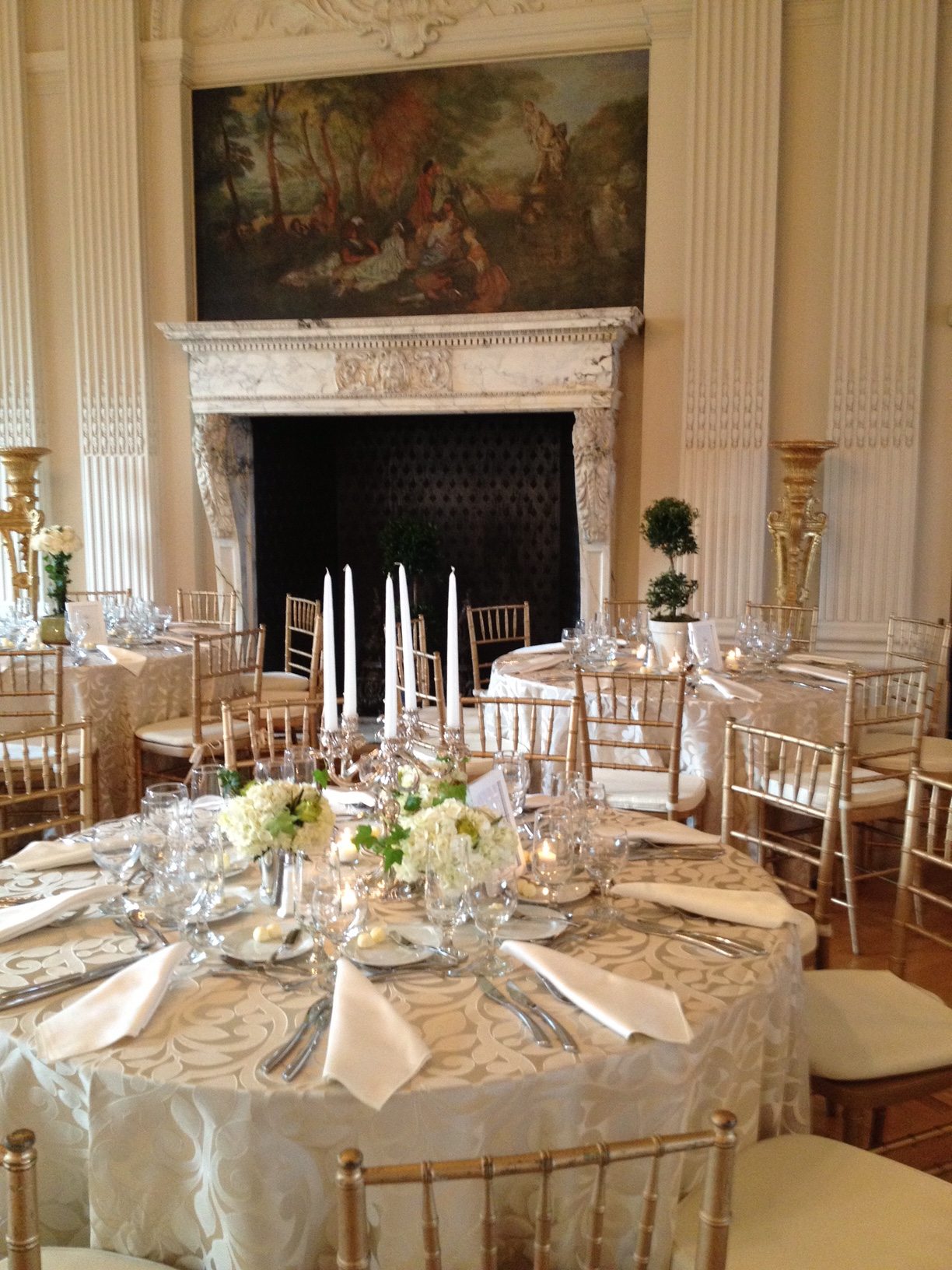
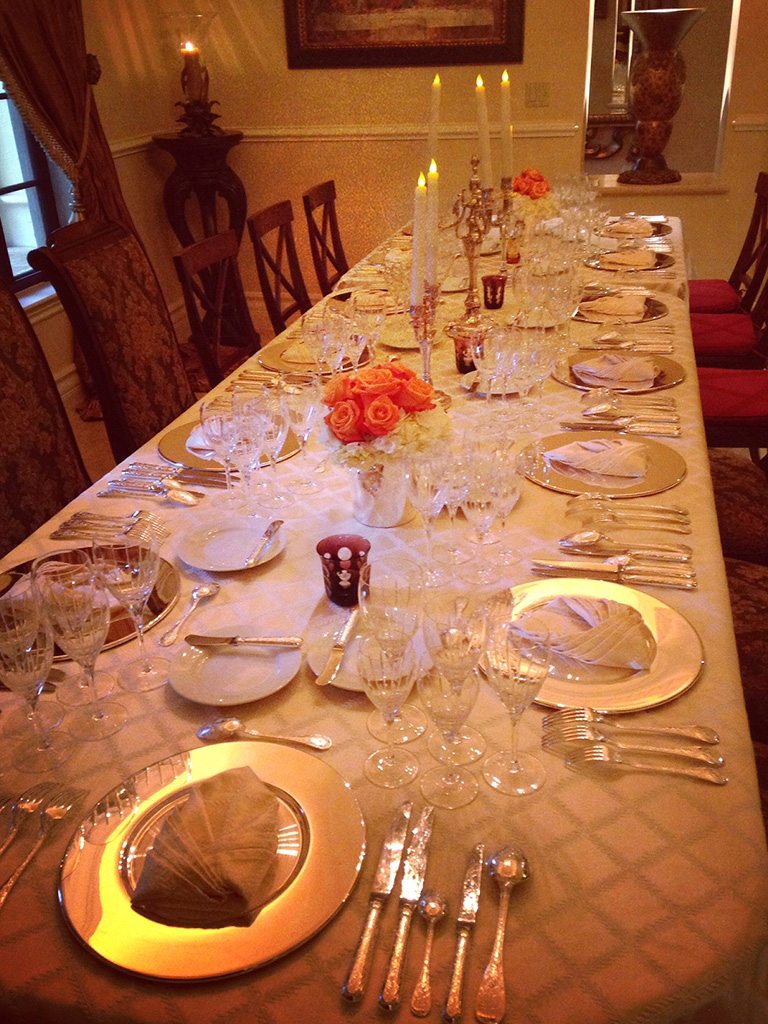
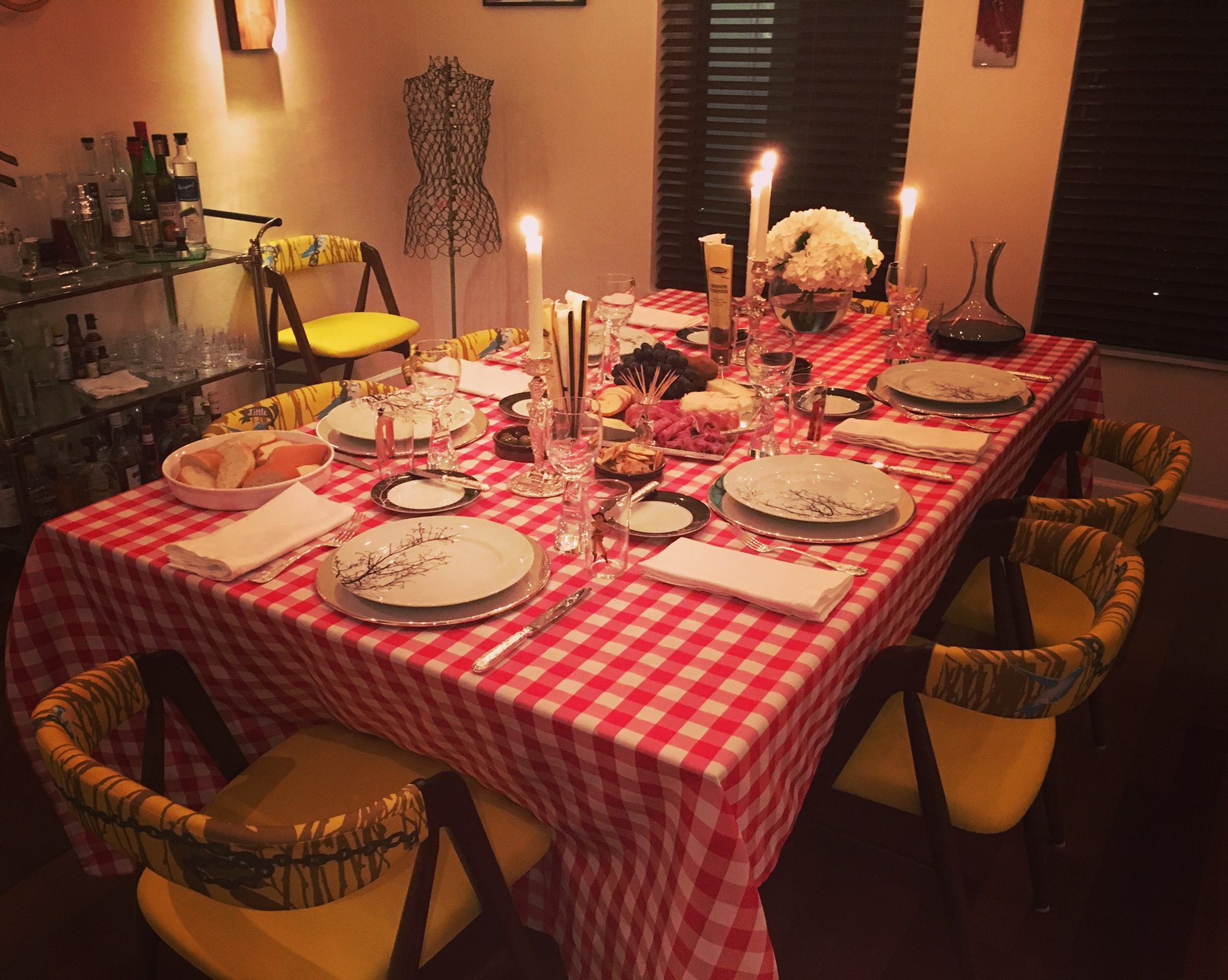
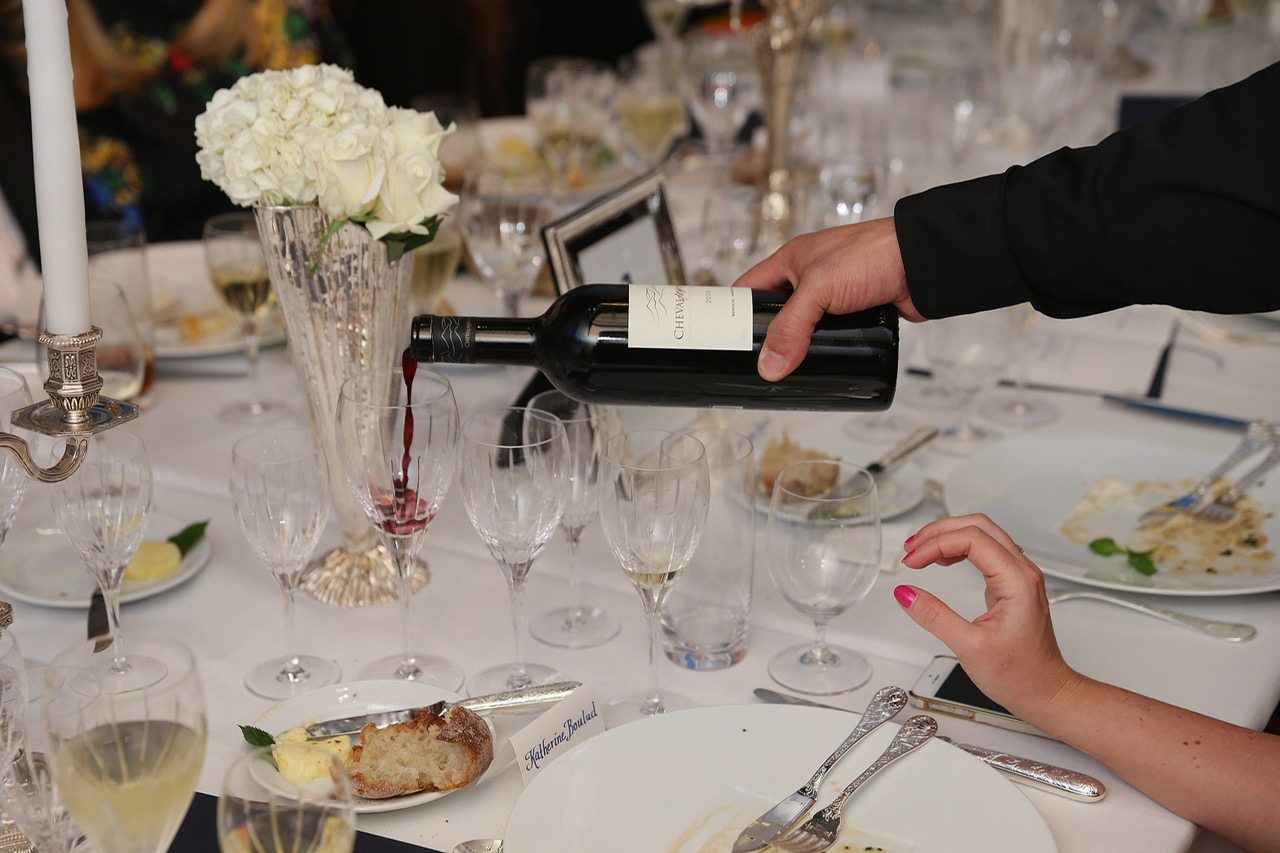
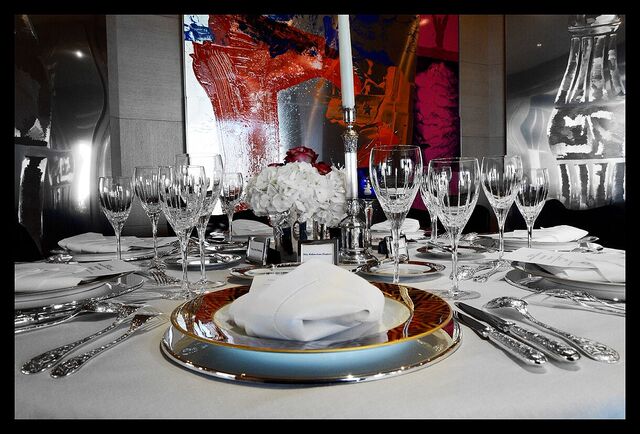
Leave A Comment